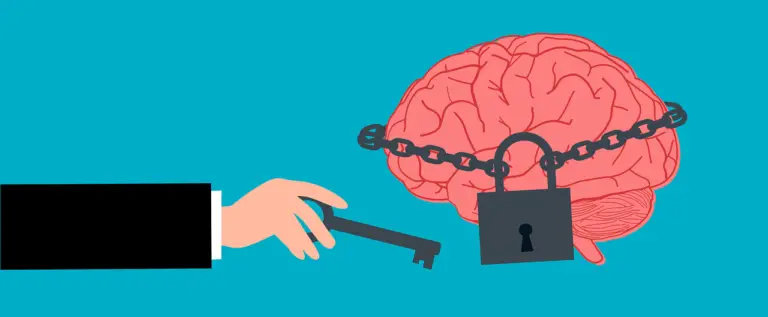A word is an ingredient of communication. And just as in cooking, we need more than one ingredient to make a recipe work. Even more importantly, for a dish to come out delicious, understanding which ingredients work well together is key. That’s exactly what word chunking is all about – knowing what words blend well together.
But it gets even better – imagine that the “chunks” of ingredients that go together best lay prepacked as a single unit, just waiting for you to reach out to them whenever you need them. That’s the magic of using word chunking for foreign language vocabulary.
In our native languages, we’re all “master chefs” in our communication “kitchen”, knowing instinctively which words go together. We don’t have to think about it.
But when learning a foreign language, it takes time and effort to reach this level of proficiency. This post is about how to achieve that fluency by mastering the technique of word chunking for expanding your foreign language vocabulary.
So what’s a chunk, anyway?
A chunk is a sequence of words that native speakers of a language perceive and often use as a single unit.
These chunks can come in several forms including collocations, idioms, everyday expressions, and verb structures.
Here’s what I mean by that:
Everyday Expressions: These are the common phrases that people use so often that have meanings that extend beyond the literal definitions of their individual words. Phrases such as “What’s up?” and “On the other hand” are examples of this.
Collocations: You’ve probably noticed that some words are always together. We call these collocations. To use English as an example, let’s look at words that you always use with “make” – “make a decision”, “make a mistake” “make your bed”, to name a few. English is filled with collocations.
Idioms: These are expressions that don’t mean what they literally say. For example, “break a leg” actually means good luck, and “let the cat out of the bag” means to reveal a secret. They can seem a bit odd at first, but they’re actually quite fun once you get the hang of them.
Verb Structures: Some verbs are always followed by a specific preposition. Such as “interested in”, “apologize for”, or “depend on”, “aware” is usually followed by “of”.
But I want to emphasize that it’s not about knowing the names of these units, or about undertanding the grammar – it’s about recognizing and remembering that patterns exist.
Noticing chunks, and then using them in your own speech might take some time, but it’s a great way to boost your fluency and sound more like a native speaker.

Why does this work?
If you’re wondering why our brains love these word bundles so much, there’s some brain science behind it.
It’s all about our working memory, the part of our brain that’s like a mental workspace. This is where we hold and process information in the short term.
Our working memory has limited space. Going back to the cooking analogy, it’s like a countertop in our brain’s kitchen. By grouping words together into chunks, we’re effectively clearing up our workspace, making it easier for our brain to use these phrases when needed, and also leave some room for thinking.
There’s also a theory called the idiom principle in linguistics, which suggests that we use and understand language in chunks, not word by word.
This principle is like the cookbook in our analogy. Just as a chef knows that certain ingredients tend to cluster together to create a great dish, our brains do this with words naturally.
By learning chunks, you’re essentially learning the recipes of your new language, making your speech more fluent and natural. I find it fascinating that language learning and cooking can be so alike.
How to start Word Chunking for Foreign Language Vocabulary?
The first step is already behind you – knowing what a word chunk is!
The next is a little more challenging – finding some that you like to work with.
You know what they say, necessity is often the best teacher. It’s far simpler to pick up things you actually need than stuff you don’t. So now it’s time to find chunks in your target language that are appealing and meaningful to YOU for your your everyday communication. And this will be different for everyone.
Let’s get modern with our approach!
With the introduction of AI into our everyday lives we all have free access to our very own personalized chunk finder – OpenAI’s ChatGPT (but you can use Bard, Bing, or any AI chatbot you have at your disposal when you read this post).
ChatGPT (which at the moment is my chatbot of choice) can provide an array of chunks in numerous languages, tailored to your needs and preferences. You simply need to ask it for a list of chunks in your target language and voila! You have a personalized list to work with. Whether you’re learning Spanish or Mandarin, French or Arabic, you can ask for chunks related to any topic, from business and sports to friendship and culture. It’s like having your own language tutor available at all times!
Remember to also check these chunks with native speakers or reliable language resources for context and usage. AI models are incredibly useful, but they’re still just tools in your language learning journey, not the be-all and end-all.
Since I speak both English and Hebrew fluently, I did an experiment with ChatGpt for the sake of this post. I asked it to list 10 word chunks and Hebrew, and it did a great job. If you would like to share your own experiences, I would love to hear from you.
We have some chunks, now what?
Now that you’re aware of chunks your mind will start to recognize the patterns naturally. And as a result, your fluency will improve gradually but noticeably.
But to fully internalize the vocabulary and chunks, practice, memorization, and using them in context are necessary. Here are some strategies to help you imprint these chunks on your brain:
Use flashcards: Write the chunks on flashcards with the target vocabulary on one side and the translation on the other. Review them regularly.
Create example sentences: Write sentences using the chunks and new vocabulary to reinforce their meanings and help you remember the collocations.
Engage in conversations: Find language exchange partners, join online communities, or participate in uni language clubs to practice using the vocabulary and chunks in conversations. If you can’t find someone to practice with, have a chat with ChatGPT!

Tools and Resources for Word Chunking
There are several language learning apps that can assist you in word chunking practice. These apps often come with pre-built vocabulary lists that are organized into relevant phrases and chunks, making it easier for you to memorize and recall them during conversations.
WordTap is a game that I developed. In WordTap, users are challenged to match words to their correct meanings under a time constraint. This encourages quick recall and reinforces memory, turning vocabulary learning into an enjoyable and effective process.
Anki is a popular flashcard app that allows you to create your own custom flashcard decks for learning vocabulary in chunks. You can also find premade decks shared by other language learners.
Duolingo is a widely-used language learning app that teaches vocabulary in context, often in small phrases or chunks. This can help you build a more natural understanding of the language.
Flashcards can be an excellent aid in practicing word chunking, especially when you create them with phrases or word groups instead of isolated words. You can choose to use physical flashcards or digital ones, like Quizlet.
By using these tools and resources, you can further enhance your vocabulary learning through word chunking and create a more engaging and effective language learning experience.
Frequently Asked Questions
1. What is word chunking?
Word chunking is a technique used in language learning where you memorize phrases or groups of words as meaningful units, rather than learning individual words in isolation. This approach promotes natural pronunciation, fluency, and aids in vocabulary retention.
2. How does word chunking improve my language learning?
By learning in chunks, you reduce the cognitive load on your working memory, allowing you to retain and retrieve phrases more readily. It also helps you sound more fluent and natural in your target language, as you’re learning phrases and expressions that native speakers commonly use.
3. Are there any tools that can assist me with word chunking?
Yes, there are numerous tools and resources to aid in word chunking, such as language learning apps like Anki and Duolingo, and flashcard systems like Quizlet.
4. I’m forgetting chunks that I’ve already learned. How can I improve retention?
Engaging in activities that require you to utilize your language skills is the best way to reinforce what you’ve learned. This post on Active Learning and Spaced Repetition goes into detail about retention techniques.
5. How do I identify chunks in a sentence?
As you become more advanced in your language learning, you’ll start to recognize frequently occurring word combinations or collocations. Working with a language tutor or using language learning apps that offer chunking exercises can also be helpful in identifying chunks.
Remember, the key to successful language learning is consistency and practice, so don’t get discouraged if progress seems slow at times.
Let’s sum it up
Word chunking is a valuable technique for learning vocabulary in a foreign language. By recognizing groups of words that commonly occur together, you can enhance your language skills and facilitate more natural-sounding conversations. It does take a little effort at first, but word chunking for foreign vocabulary will not only help you learn new vocabulary, but will also boost your overall language fluency and confidence in your abilities.




